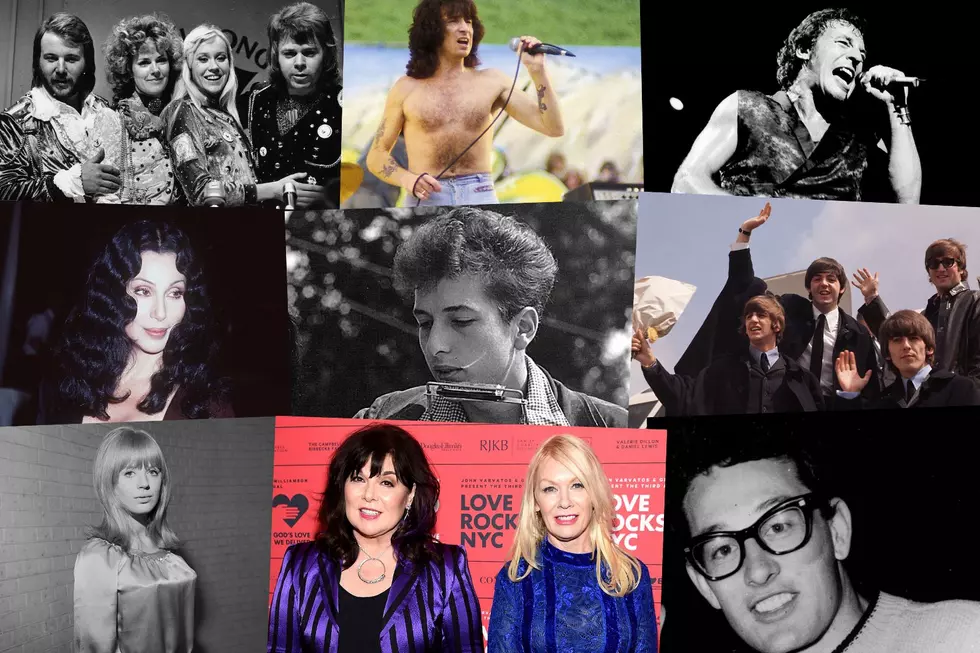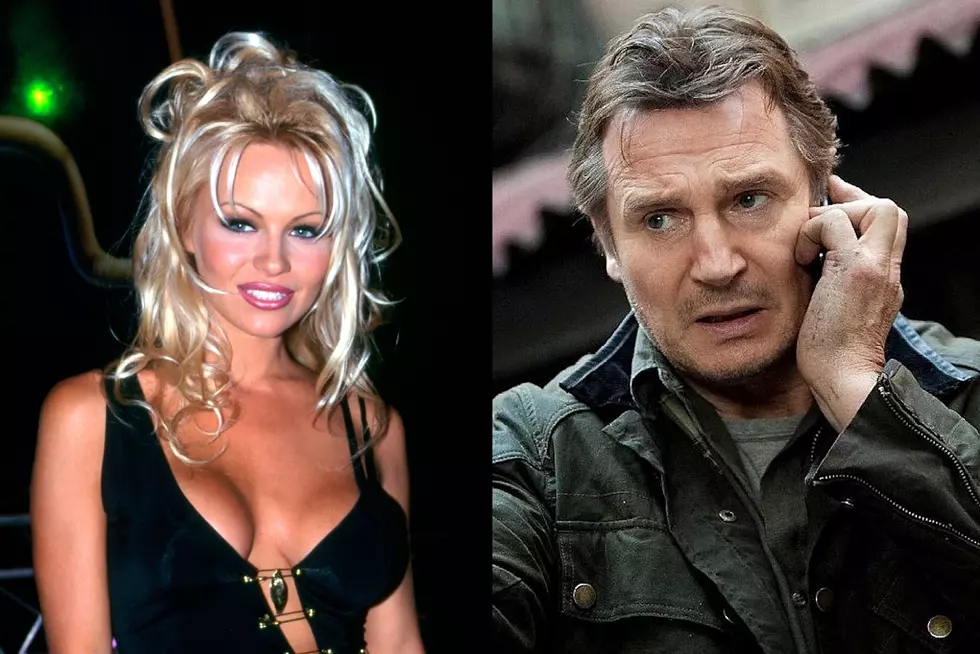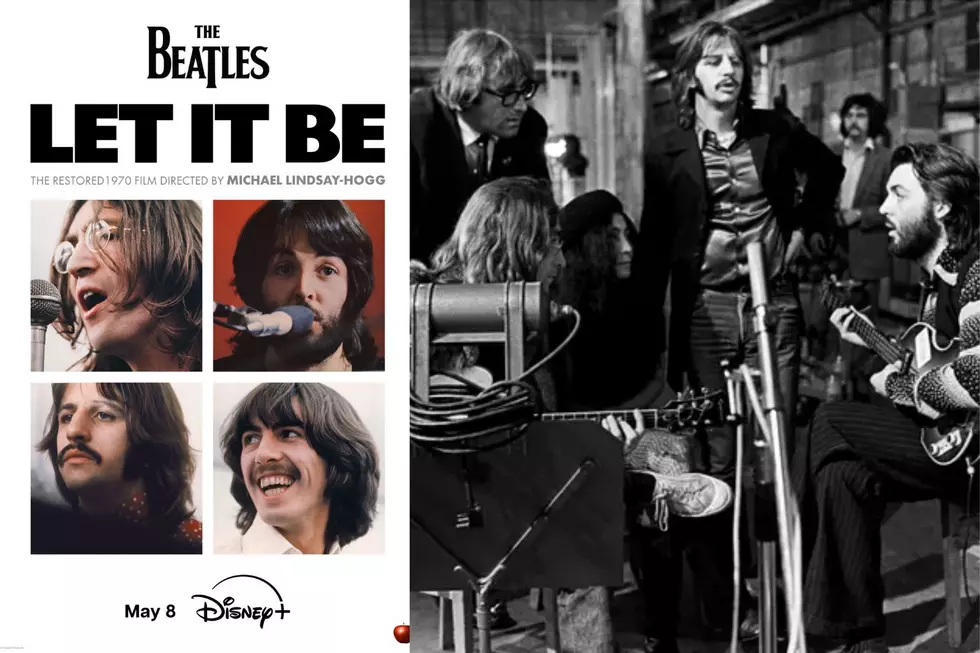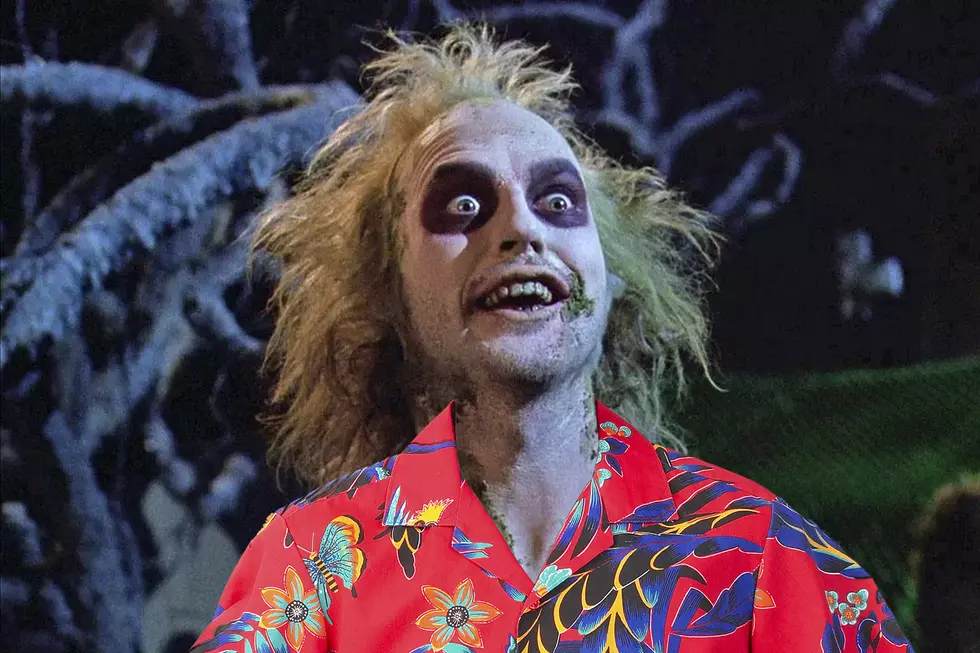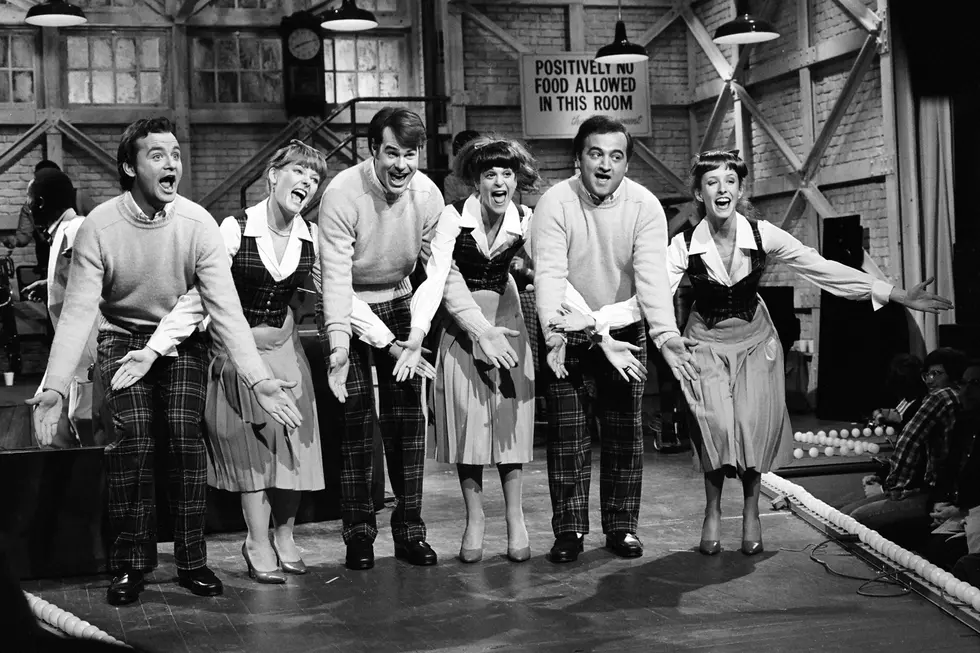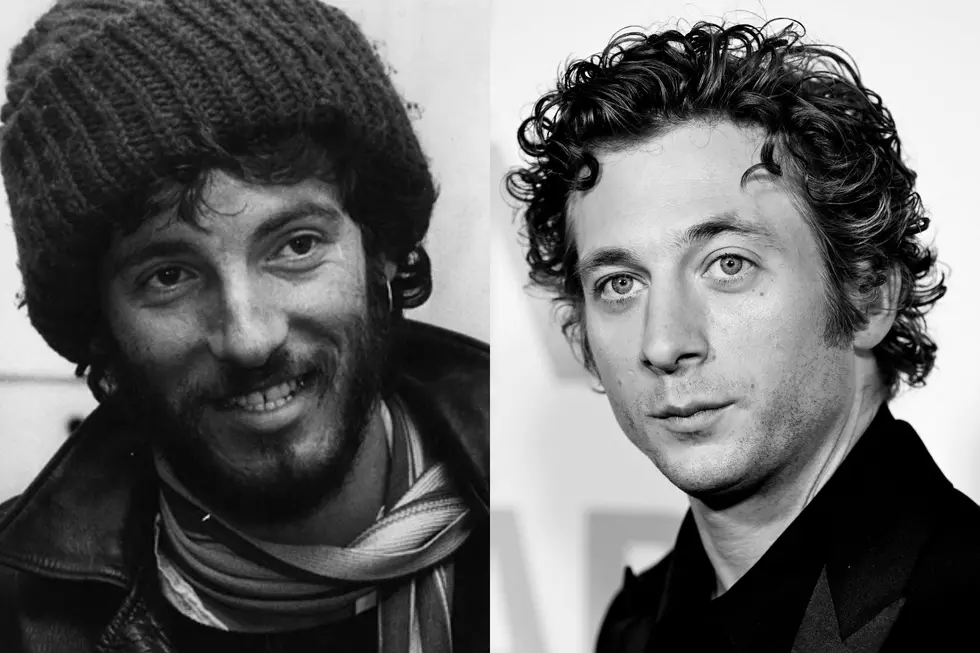
40 Years Ago: ‘Battlestar Galactica’ Returns and Flops With ‘Galactica 1980′
There’s a recurring phenomenon in the world of TV sci-fi: the fan write-in campaign. Network cancels show, supporters demand they bring it back, surprised network temporarily recalls that people and stats are two different things, network reinstates show.
So it was with Galactica 1980, a reaction to the cancellation of Glen A. Larson’s original Battlestar Galactica. The story of a colonial fleet traveling the galaxy in search of Earth, the lost last home of humanity, had proved popular, as had its titular battleship, its Viper fighter ships, Dirk Benedict’s hero pilot Lieutenant Starbuck and their chrome robot villains, the Cylons. It ran for 24 episodes from September 1978 until April 1979, and then ended, with ABC citing costs and lack of ratings.
Larson responded that the ratings were fine until the network started moving the show so often that viewers couldn’t find it in a regular slot. Along with a write-in campaign by fans, there were mass protests outside ABC offices. It was even suggested that the cancellation contributed to the suicide of a 15-year-old boy.
In response to the backlash, Larson was asked to bring Galactica back – after he performed a little stunt to edge the decision in his direction. “I knew there was a certain softness in ABC’s Sunday night schedule, so I went to work on a script I wrote strictly on speculation at the Plaza Hotel in New York City while I was actually there on business for NBC,” he told Epic Illustrated in 1980. “I was with Charlie Engle, one of the vice presidents at Universal TV, and the president of the company called to tell us he’d be having dinner with Fred Pierce, the president of ABC. So Charlie and I rented Plaza Hotel bellmen’s uniforms from the guys at the desk, put them on, went into the restaurant and hand-delivered the script to Pierce.
“I told him, ‘I’ll do anything to get your attention. Now, will you read this and see if you don’t agree that it works?’ He read it, and I got the go-ahead within a couple of days. It was a labor of love for me, because I really care about that show. I’m terrifically pleased that ABC was so supportive and admitted they’d made a mistake in canceling it in the first place."
The first problem was that, predictably, the budget was going to be tight – but, story editor Allan Cole recalled, Larson just didn’t care. “You have to realize that GL was really, really hot at the time,” Cole told John Larocque in 2005. “[He] had about six prime-time shows on the air. Nobody, but nobody, could tell him what to do.”
Larson and Donald P. Bellisario proposed a story set five years after the last Battlestar Galactica episode, which allowed time for several main characters to disappear because of budget reasons. When the availability of actors they did want back became an issue too, the next idea was to set the new show 30 years after the original, with a time-travel plot device. That concept would allow the villain, Xavier, to attempt to disrupt human development on Earth across a period of centuries while being prevented by the Colonials. The plot device was dumped after the pilot episode was made but eventually became the basis of Bellisario’s Quantum Leap.
When Galactica 1980 finally hit screens on Jan. 27, 1980, only Lorne Greene (who played Commanded Adama) and Herb Jefferson Jr. (Colonel Boomer) remained from the original cast. The opening story was a TV movie split into a three-part miniseries and fared relatively well. The premise is based on the Colonials reaching Earth around 30 years after receiving TV signals from the planet (confusingly, the final episode of the original Galactica showed them to be from the 1969 moon landing, only 11 years earlier). On arrival, it's obvious the humans of Earth aren't sufficiently advanced to fend off the Cylons or provide a safe haven for the survivors of the other 12 colonies.
The Colonials decide they must help Earth advance its technology, but resolve to do so by peaceful means. Xavier – an advocate of the concept that war is the greatest means of technological advancement – goes rogue and returns to the '30s, where he helps the Nazis develop more powerful killing machines. Galactica pilots Dillon (Barry Van Dyke) and Troy (Kent McCord) are sent to stop him.
Watch ‘Galactica 1980’ Opening
The miniseries was supposed to be the end of it, but ABC ordered more episodes. The network didn’t like the time-travel device and required new episodes to contain educational elements to satisfy requirements of the 7PM “family hour” schedule slot.
Larson proposed the show should focus on children and came up with an appropriate new approach: The Colonials decide the fleet must move away from Earth to prevent its discovery by the Cylons, but they send their children, guarded by Dillon and Troy, to live on the planet and learn to blend in. However, as a result of atmospheric differences, they find they have near-superhuman abilities.
Additional hocus-pocus included flying motorcycles and invisibility, with hilarious Earthling reactions to the feats.
See the Flying Bikes From ‘Galactica 1980’
"The kids on the show drove us all nuts,” Cole remembered. “Shooting with children is probably the hardest kind of series to do. There are many, many restrictions. Plus, they all have to have a teacher, and if the kid is a star, you have to listen to the teacher as if she were speaking from on high. And then there are the stage moms, all of whom ought to be locked up. It's a wonder any of the kids escape with a shred of sanity.”
Galactica 1980 was doomed from that moment on. It didn’t connect with earlier Galactica fans, it didn’t draw a new following of its own and, worse, the additional costs of shooting on weekends to accommodate the child actors increased crew costs. The show quickly busted its budget. Cole recalled it was around $600,000 or $700,000 per episode, but added that the "show came in routinely … at $1.2 million to $1.5 million. My memory is a little hazy on the exact numbers. But I know I'm not too far off. … Which is okay, if you are pretty sure you are going into syndication eventually. Then you get your money back in spades. But we're talking a bottom-line 100 episodes shot, before the gods of syndication smile on you. And no one honestly thought that would happen with Galactica. As it turns out, their expectations weren't low enough!”
He admitted that Galactica 1980 "was an awful show. It deserved to be dropped. At the time, I remember that I posted a big sign on my office door with the number 13 on it. We had been told if the ratings dropped to 13 or below, we would be cut. Every morning my then-partner, Chris Bunch, and I would chant, ‘Come on, 13!' Must have been a great mantra, because the show dropped steadily, week after week.”
After the opening story, the only other high point of the series turned out to be its 10th and final episode, "The Return of Starbuck." Benedict reprised his hero-pilot role, marooned on a distant desert planet after a dogfight, with only a rebuilt Cylon named Cy for companionship. As they spend time together and learn about the similarities and differences in each other, a pregnant woman, Angela, appears. Starbuck then becomes her newborn son’s effective father. Knowing the Cylons are returning for their lost ship, Angela persuades Starbuck to turn the remains of his Viper into a life pod for the child, who is sent into space as Cy is destroyed in a bid to save Starbuck from the other Cylons. With Angela ascending into the heavens, from where she seemingly came, Starbuck is left alone.
“It’s really good, it’s funny, examines Starbuck well and has its heart in the right place,” HoganReviews said of the episode. “Very odd to see it at the end of this car crash of a series, but at least the original Galactica run ends on a high note.”
“Basically, [Larson] was tired and pissed off," Cole recalled. "This was never the show he wanted to do. And he and Dirk Benedict were always pretty tight. He talked Dirk into coming back to do one last episode. Which was basically a two-man radio play. Personally, I think it was the only decent episode in the series and showed what [Larson] could have done if they had left him alone. And before I sound too cuddly – there was also the budget. They were flat out of dough and knew the series was going to be killed. That episode was the only one that came in under the license fee.”
Watch ‘Return of Starbuck’ Clip From 'Galactica 1980'
If "The Return of Starbuck" had been broadcast earlier in the season, and if its successful elements had been picked up on, maybe Galactica 1980 could survived. There was even a future plot sketched out for Starbuck, who presumably died alone on the desert planet. But as work started on the 11th episode, "The Day They Kidnapped Cleopatra," ABC canceled the show.
The 10 completed episodes were re-branded under the original Battlestar Galactica name and sold to syndication in a bundle deal with the first series. And unlike a number of sci-fi serials that found a new audience at that stage, no one ever asked for the return of Galactica 1980. Its failure is likely to have affected the direction of 2004's Battlestar Galactica reboot.
“Several episodes were little more than trite morality plays about such things as pollution and racism,” Metacritic observed of the 1980 flop. “As a result, the finished product ended up being insulting to most audience members' intelligence, while alienating core fans of the series who found the new premise absurd.”
“Troy is completely charisma-less and … bad at reading lines, and Dillon’s attempt to be the funny one just doesn’t work because, again, he’s bad at acting,” HoganReviews opined. “He reads his jokey dialogue and smiles while saying them, but it doesn’t come across right. Casting two good actors in these roles wouldn’t have saved the show, but it would have made the process a lot more bearable.”
68 Horror Movies Featuring Rock Stars
More From Ultimate Classic Rock
